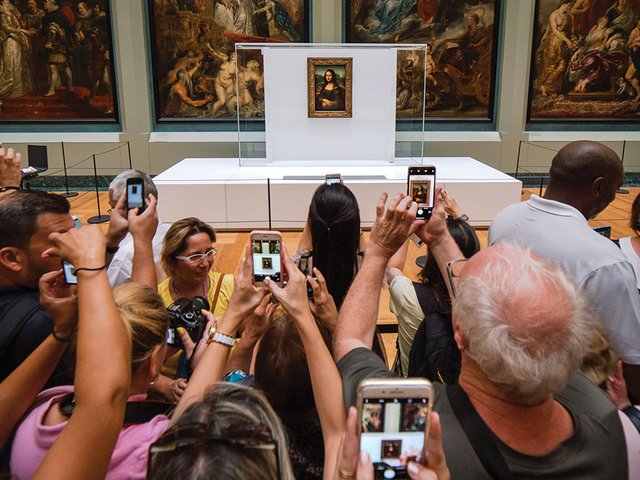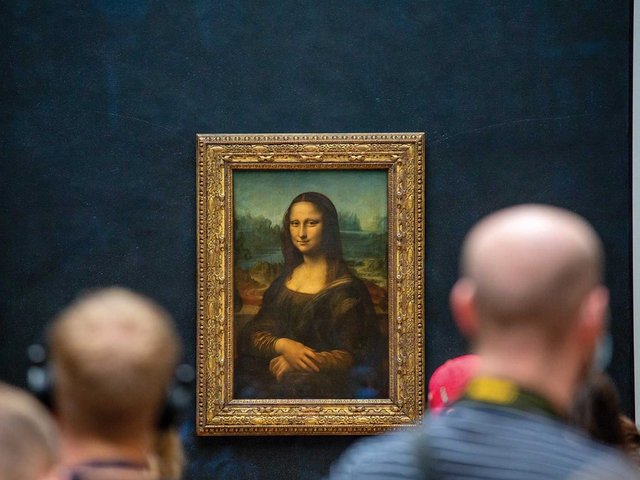“An intractable problem” is how Martin Kemp, the leading Leonardo specialist, described the Mona Lisa’s fate: besieged by crowds held at a distance at once necessary yet helpful neither to the picture nor its would-be viewers, let alone the other, ignored, masterpieces around it.
Musée du Louvre has long known it has a problem in the Salle des États. In May, Laurence des Cars, the director of the Louvre, reportedly told staff: “We don’t welcome visitors very well in this room.” She added: “Moving the Mona Lisa to a separate room could put an end to public disappointment.” Said space might well be underground, as part of a project (including a new entrance) that would cost around €500m. The French government has already said it will not help.
I am normally in favour of museums getting everything they reckon they need from governments. But I can’t help but feel that spending half a billion on rehousing La Joconde, as the French call the painting, is a waste. Because the difficulty is not just due to its popularity.
As Vincent Delieuvin, the chief curator of 16th-century Italian paintings at the museum, has pointed out, Leonardo “wanted to establish a face-to-face relationship between the painting and the person contemplating it”. Kemp, speaking on our The Week in Art podcast in May, reinforced this crucial aspect. “It’s a very personal picture, done for the sitter’s husband and would have been seen in very private circumstances,” he said. Moving the painting to a space with better visitor circulation would not solve “the basic problem that this is not a picture for huge crowds of people to see at the same time”.
I was completely alone with other masterpieces, interrupted only by the flow of people heading for the Mona Lisa
Here, then, is an almost sacrilegious suggestion for the Louvre: write off the Mona Lisa. Either leave the painting where it is or move it to another existing space. Do all you can to improve the visitor experience, but forget about building a costly new sepulchre for its reverence. Instead, invest in drawing visitors’ attention to the numerous other masterpieces in the collection.
Passed-over masters
The most infamous victims of the myopic quest to catch a glimpse of Leonardo’s painting are the Venetian pictures around the Mona Lisa. Sure enough, on a summer visit, I regularly had to ask smartphone-clutching Jocondistes to step out of the way of sundry Titians and Tintorettos. Those paintings should be moved.
What happens nearby is more confounding still: the neighbouring Grande Galerie is also infected. There, you can find the Louvre’s other Leonardos, including the great Virgin and Child with Saint Anne. I was completely alone with this painting, interrupted only by the flow of people heading for the Salle des États. I also had essentially solitary encounters with several other masterpieces, including Caravaggio’s Death of the Virgin—again, one of his finest works. Not a single passing visitor looked at it. Lucky me, yes. But also: how absurd, in the world’s most visited museum.
Soon after my Louvre visit, the National Gallery in London announced that its small but brilliant exhibition The Last Caravaggio closed with the 10th highest per-day visitor figures in the gallery’s history. Its director, Gabriele Finaldi, says: “Caravaggio exercises a mesmerising attraction on contemporary audiences.” You’d never have known on that afternoon in the Grande Galerie. I wonder: is the pace in this, one of the world’s most impressive spaces for art, too uniform to grab the attention of visitors on their single-minded quest? Does it need the shorter, sharper shocks that shows like The Last Caravaggio provide?
The Louvre should forget about costly building projects and devote all its energies and funds to radical and dynamic programming and storytelling about its unparalleled holdings. Because the Mona Lisa problem is indeed intractable, and permanently so.






